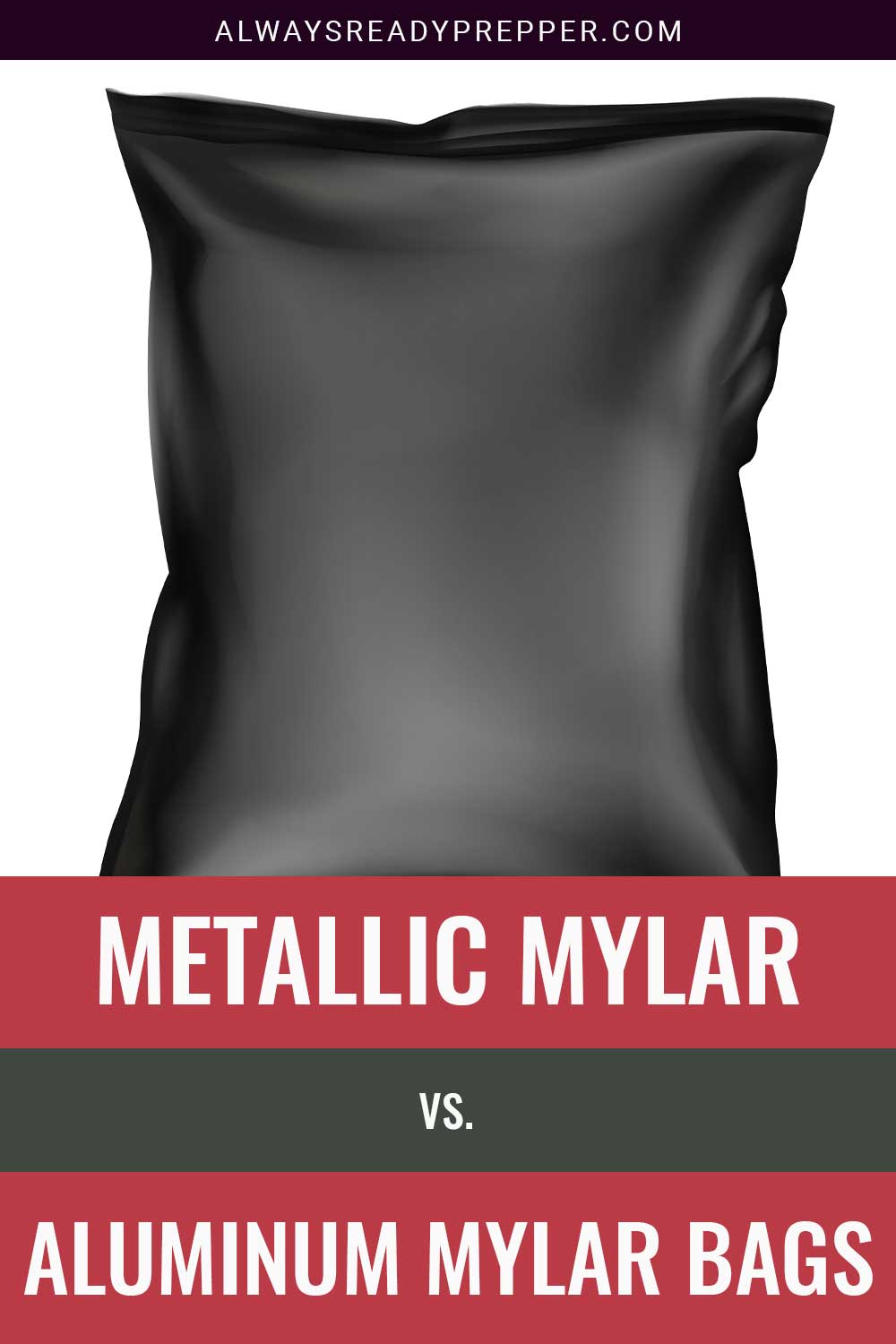Metallic Mylar vs. Aluminum Mylar Bags
We may earn commissions for purchases made through links on our site. Learn more on our about us page.
The term Mylar comes from the DuPont factory’s term for their form of polyethylene terephthalate (PET) film, created by Jim Irwin in 1953 when working at what is now known as 3M industries.
The differences here will be the thickness and opaqueness of the materials. However, metallic Mylar and Aluminum Mylar will have many of the same qualities despite the differences in thickness.
Each will provide the benefits of long-term storage Mylar is renowned for. Both will also have the ability to keep moisture out and provide durable and flexible packaging. In this article, we will make a comparison of these two forms of Mylar.

What are the Similarities?
These two package types will be lightweight and provide a nice solution for the outdoorsman’s backpack when transporting food and other dry ingredients.
In addition, they both will have that innate ability to preserve their foods throughout the trip and in prepping storage situations.
Mylar has the reputation of being able to be cut into any shape or size needed for a business or household. Some Mylar manufacturers will even take custom orders. Both will also have the durability to stand the test of time, even resisting puncture from the sharpest objects.
What are the Differences?
The primary difference between these two sheet forms of Mylar will is the thickness. Aluminized Mylar is thinner than its thicker Metallic cousin.
This will make the thinner bags more susceptible to UV and sunlight radiation damage, in contrast to the opaque Metallic Mylar bags.
The thicker Mylar will come in different colors, while the aluminized Mylar is produced as a liner, more than for bag forms, and the thicker Mylar is mass-produced for business purposes.
As a result, even florists and other plant products will be able to stay fresh while sealed inside.
Pros and Cons: Metallic Mylar vs. Aluminum Mylar Bags
The major con of using aluminized mylar film is the lack of Ultraviolet protection. The thin material does not have the protective abilities of the thicker mylar products.
However, the pro will be the utility when lining other products, and the tin can be used for cooking and insulation.
Metallic Mylar bags are going to be the best form of plastic material for business needs and household storage, especially for the disaster preppers looking for a solution for storing their dry goods and foods.
The con will be that material cannot handle the colder environments and the warmer ones, which removes the mylar bags from viable freezer bags.
Which One is Easier to Maintain?
Both of these materials are made to last a lifetime, which makes maintenance fairly easy when it comes to both of the Mylar forms. Now with this being said, the thinner materials will have more likely hoods of being punctured or damaged.
Metallic Mylar bags have been tested and are considered in many ways to be indestructible, especially when it comes to the daily events that an average customer faces in the cities and neighborhoods.
Therefore we can give the nod to the Metallic Mylar because of the protective thickness.
Which one Lasts Longer?
As mentioned earlier, Mylar is a material that is designed to last for a lifetime, no matter how thick the film is. If we use the argument from the section before, the thinner materials will more likely experience an event that causes a puncture or other damage to the film.
The probability of something occurring that causes damage to the thinner aluminum mylar but not the metallic Mylar will again give the nod to the thicker Mylar material.
There are just not that many situations that will cause damage to the thicker Mylar products, especially the bags.
Final Thoughts on Metallic Mylar vs Aluminum Mylar bags
Not many applications will require thin aluminum mylar films to be exposed to any threats of damage. For the most part, this thin mylar product is used for insulation or cooking.
However, a few products out there need a thinner package, almost translucent, so that the customer can view the product before purchasing.
The thicker Metallic Mylar is used for bags. For those that have seen or used a mylar-made bag, that is going to be made from metallic mylar materials. Just keep in mind that the best usage for these bags will be for long-term storage, especially for dry goods and foods.



Leave a Reply
You must be logged in to post a comment.